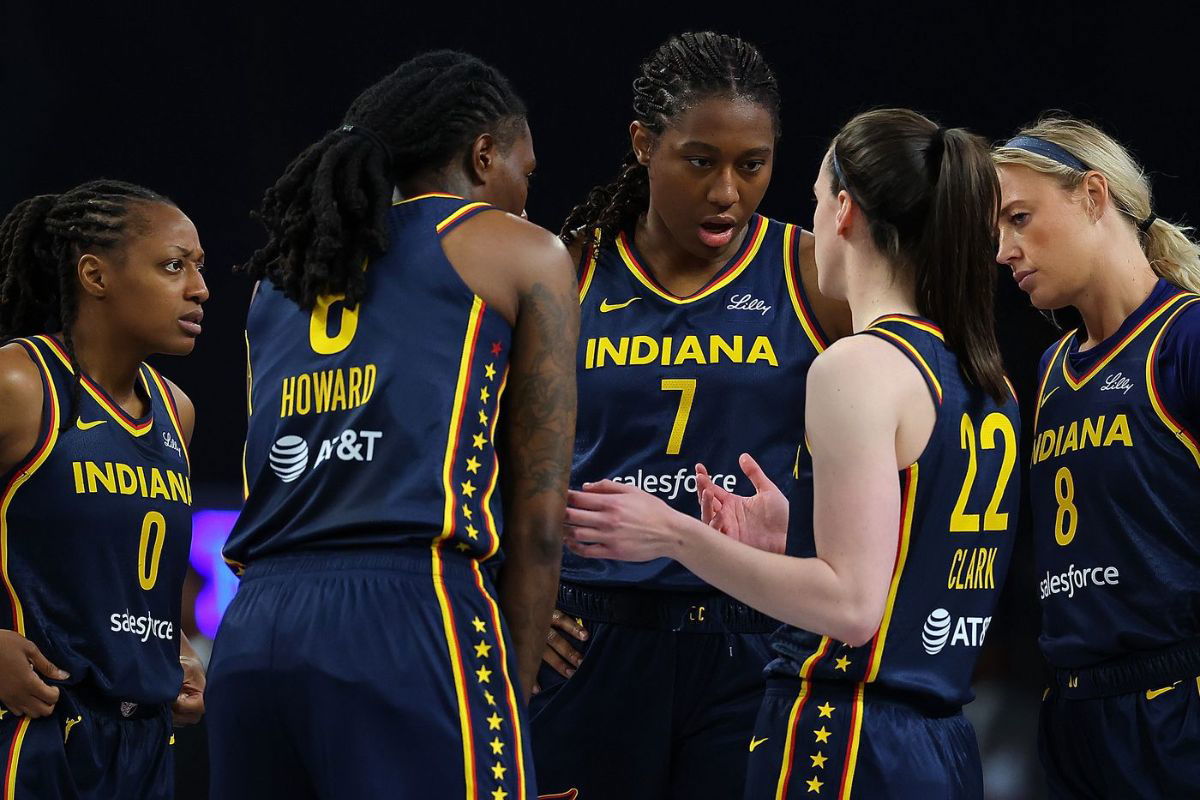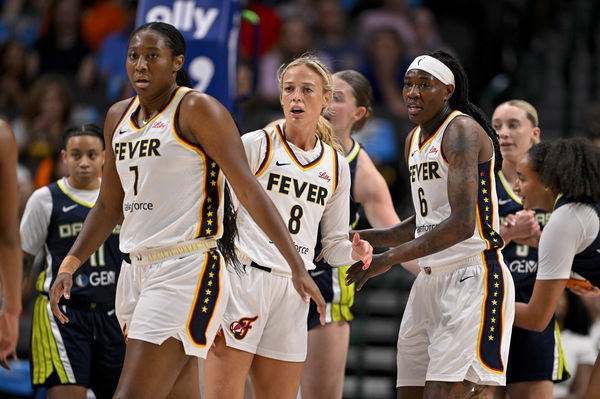

Heading into the last leg of the 2025 WNBA season, the Indiana Fever are still firmly in playoff contention. However, that doesn’t mean that their roster is solid… Injuries, controversies, and circumstances have forced Kelly Krauskopf and Amber Cox to constantly improvise and make moves all year round. Luckily, their decisions have turned out pretty well so far, with Aari McDonald and Chloe Bibby being worthwhile additions.
Watch What’s Trending Now!
However, a lot of analysts expected Indiana to try and make a pretty big move at the trade deadline, trying to add one more star to the roster. What did the Fever actually end up doing? Absolutely nothing. There was radio silence from the Gainbridge Fieldhouse on Aug 7th, and honestly, there were a lot of factors that led to their decision. Let’s find out why exactly the Indiana Fever didn’t make any moves over the last week!
ADVERTISEMENT
How did salary cap constraints influence Indiana’s decision?
See, the WNBA’s finances are quite different than what we’re used to. Unlike the NBA’s ‘soft cap’ or luxury-tax system, the W operates under a hard salary cap, which is $1,507,100 for the 2025 season. This means that no team will be allowed to exceed this predetermined salary limit unless through hardship contracts.
To be fair, Indiana freed up a lot of money in the books after getting rid of DeWanna Bonner’s contract a while ago. After which, they signed Aari McDonald and Chloe Bibby to rest-of-season contracts, ending up with about $95,320 in usable cap space at the trade deadline. Kelly Krauskopf and Amber Cox’s team ranked fourth in the league in terms of available cap space, but it still wasn’t enough.
Top Stories
Cowboys Fire Defensive Coordinator Matt Eberflus: Contract, Salary, NFL Earnings & More

Ross Chastain Labels NASCAR Driver “The Most Punchable Face” to Excuse Himself Over Punchgate Controversy

10 Biggest NFL Draft Busts of the Last Decade, Including Trey Lance and Justin Fields

Andy Reid Sets Record Straight on Travis Kelce’s Chiefs Future As Retirement Question Continue to Mount

Commissioner Steve Phelps Quits NASCAR Days After Getting Exposed in Lawsuit Trial

Arman Tsarukyan Back in Play as Justin Gaethje Staph Infection Rumors Causes Fan Panic Before Paddy Pimblett Fight

A possible remedy for them would’ve been to sign Bibby to another seven-day contract instead of signing her for the rest of the season on Aug 1. But the six-foot-tall forward provides the team with an incredible amount of spacing because of her shooting prowess, making her $23,322 prorated contract worth every single penny!
ADVERTISEMENT
What role did roster composition and player contracts play in avoiding trades?
There were definitely trades for Indiana that would’ve made them better. However, they were as restricted by their roster as they were by the salary cap. The thing is, front offices don’t just want short-term value when they’re making moves… Ideally, they want stable pieces that will benefit them for seasons to come.
ADVERTISEMENT
However, Indiana lacks the pieces required to construct a trade package. Why? Because they only have three players under contract past 2025—Caitlin Clark, Aliyah Boston, and Makayla Timpson. Players around the league haven’t signed long-term contracts this year because of the ongoing CBA negotiations and the hopes of a bigger payday. So, the only players left on the chopping board are Clark, Boston, and Timpson, and let’s be honest, no one’s trading the first two.
If the Fever gets rid of Caitlin Clark, they also get rid of 26.5% of the league’s economic activity. Before CC stepped foot in the Gainbridge Fieldhouse, the Indiana Fever were valued at $90 million, but now? Forbes 2025 had them at a mindblowing $300 million, signalling a 311% increase since Clark joined the team.

Imago
Sep 25, 2024; Uncasville, Connecticut, USA; Indiana Fever guard Caitlin Clark (22) talks to Indiana Fever guard Kelsey Mitchell (0) during the first half during game two of the first round of the 2024 WNBA Playoffs at Mohegan Sun Arena. Mandatory Credit: Paul Rutherford-Imagn Images
Not to mention, they netted $32 million in revenue last year, topping the WNBA. Attendance was up by over 300%, ticket prices skyrocketed, and merch got sold out. Basically, people wanted anything and everything to do with Caitlin Clark. So, trading her isn’t exactly a great idea.
ADVERTISEMENT
Aliyah Boston, on the other hand, is part of an amazing young trio alongside Kelsey Mitchell and Clark. She’s an All-Star, an impactful forward, and a piece that Indiana has invested a lot into. The future looks bright for Indiana if we picture Clark and Boston playing together for years to come, and the front office sees that as well.
And as for Timpson? Well, she doesn’t have the same value as the other two, obviously. The six-foot-two player has been introduced to the big leagues in a rather limited capacity. She’s coming off the bench and playing significantly fewer minutes than some of her fellow rookies. That drops her trade value drastically, and a lateral move doesn’t make sense for the Fever.
ADVERTISEMENT
Why did team chemistry and recent performance outweigh trade benefits?
Logistical reasons aside, would a trade make sense for Indiana? Do they need more help? Caitlin Clark’s injury asked the team a brutal question this season—What will you do without your best player? And credit where credit is due, the Fever has shown that they’re not a one-woman show. Under the veteran leadership of Natasha Howard, Indiana has been playing really well, all things considered.

Imago
Aug 1, 2025; Dallas, Texas, USA; Indiana Fever forward Aliyah Boston (7) and guard Sophie Cunningham (8) and forward Natasha Howard (6) during the game between the Dallas Wings and the Indiana Fever at the American Airlines Center. Mandatory Credit: Jerome Miron-Imagn Images
They racked up an impressive five-game win streak in late July. Players like Kelsey Mitchell and Aari McDonald wowed the Fever with stellar performances through this patch. Not to mention, their 17-14 overall record has them above .500 and firmly in playoff contention. Stephanie White’s pace-and-space system has worked extraordinarily well, with the addition of Chloe Bibby spacing out the floor even more.
ADVERTISEMENT
So, when everything is going great, even without your best player on the court, why would you meddle with the roster? Indiana might’ve lost their last two games, but they haven’t lost their spirit. It will be interesting to see how the team fares throughout the rest of the season and whether their decision to sit quietly at the deadline will pan out.
ADVERTISEMENT
ADVERTISEMENT
ADVERTISEMENT

